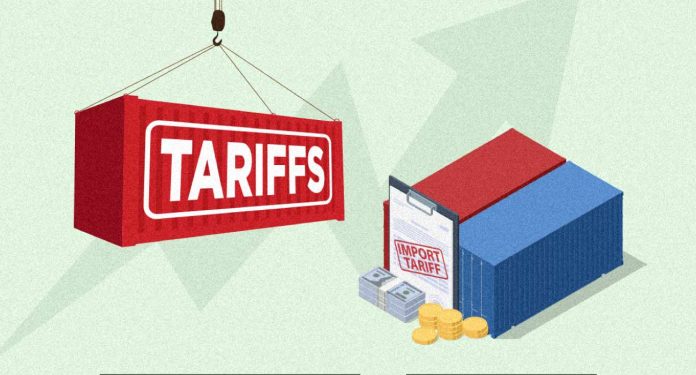As tariffs drive new price hikes, brands face a tough choice: absorb costs or risk shopper defection. AI and pricing agility may decide who wins the cart.
After years of inflation, supply chain chaos, and pandemic-era price spikes, consumers have seen nearly every reason for their shopping carts to become more expensive. With overall U.S. prices climbing almost 25% since 2020, the last thing consumers need is another hit to their wallets.
Yet, tariffs are adding pressure to brands, which are facing tough choices about whether to eat the cost or pass it downstream. This is especially fraught for those selling on platforms like Amazon, Target, and Walmart, where a few dollars can mean the difference between winning the Buy Box or disappearing from view.
This tension raises a central question for brands: Are shoppers becoming conditioned to constant price hikes, or have cost increases become so routine that consumers barely notice?
The quiet dangers at the value end
If the past few years have taught brands anything, it’s that consumers can adapt quickly to moving price targets. During the pandemic, for example, online shoppers were inundated with “out of stock” messages, conditioning them to grab items when available, even if prices were higher than usual.
Meanwhile, dynamic pricing has become more routine. On Amazon and Walmart, algorithm-driven price changes happen so frequently that most shoppers rarely expect the same item to hold steady for long. When cart totals creep up by a few dollars, many people chalk it up to the usual algorithmic shuffle.
But that doesn’t mean consumers don’t care. They care deeply — and they know they have alternatives. When online sellers raise prices faster than what’s justifiable to shoppers, these consumers are more willing to defect to retailer-owned alternatives, like those by Amazon Basics or Walmart’s Great Value. Nearly six in 10 consumers say they’re now buying more private label products than a year ago, pushing sales in the U.S. to a record $271 billion in 2024.
For brands, that’s the real warning sign. Small increases may be tolerated in the moment. Still, price perception at the value end is less about loyalty and more about the algorithm rewarding the lowest-cost option, making even “tiny” increases risky.
High stakes for high-ticket items
Big-ticket categories are where price sensitivity turns into outright resistance. Electronics, appliances, and branded footwear are particularly vulnerable, both due to consumer psychology and supply chain dynamics: 100% of U.S. imports of electric toasters and alarm clocks, and around 90% of microwaves, LED bulbs, keyboards, and baby strollers, come from China. Similarly, almost all shoes sold in the U.S. are imported.
When a laptop suddenly costs more than expected, or branded sneakers cross a familiar threshold, shoppers are jolted into comparison mode. Carts sit idle, wishlists grow longer, and some may abandon the purchase altogether. One report found that 25% of shoppers are holding off on big-ticket items over $500, while nearly 20% who plan to buy major items are waiting for a sale.
What else to watch for (and how to respond)
Every brand is navigating the fallout from the tariff. Some are absorbing the added costs, which protects conversion in the short term but squeezes margins thin. Others are passing increases directly to consumers, a move that risks higher cart abandonment and accelerated trade-downs to cheaper alternatives. So what’s the smarter path?
- Diversify your product offerings with intent: Cover both premium and entry-level SKUs so when shoppers trade down, they stay with your brand instead of defecting to a competitor. That could mean smaller pack sizes, mid-tier “value” versions, or bundles that deliver more perceived bang for their buck.
- Stay agile with pricing: Marketplace prices shift by the hour, not the quarter, which means manual monitoring often can’t keep up. Analytics solutions that report on price sensitivity can provide brands with an always-on view of competitor moves and shopper reactions, enabling them to adjust pricing accordingly before lost sales appear in the P&L.
- Get surgical with promotions: Blanket discounts drain profitability. The more effective approach is to utilize software to identify the categories and SKUs where sticker shock is most pronounced and deploy promotions accordingly. That way, you defend your share in vulnerable spots while preserving margin everywhere else.
- Forecast tariffs into your inventory plan: Tariffs increase landed costs, which alter the calculations for what to stock, how much to stock, and when to stock it. Brands that can see pricing, demand, and inventory signals together are better positioned to avoid overstocks on costly items and keep high-demand products flowing. AI-powered retail agents can surface those signals in one command center, provide recommendations, and make trade-offs easier to manage.
Tariffs won’t be the last disruption, and consumer responses will continue to swing between quiet acceptance and open resistance. That’s why brands need AI tools that can distinguish between them, ultimately empowering them to adapt pricing, promotions, and inventory in real-time.










